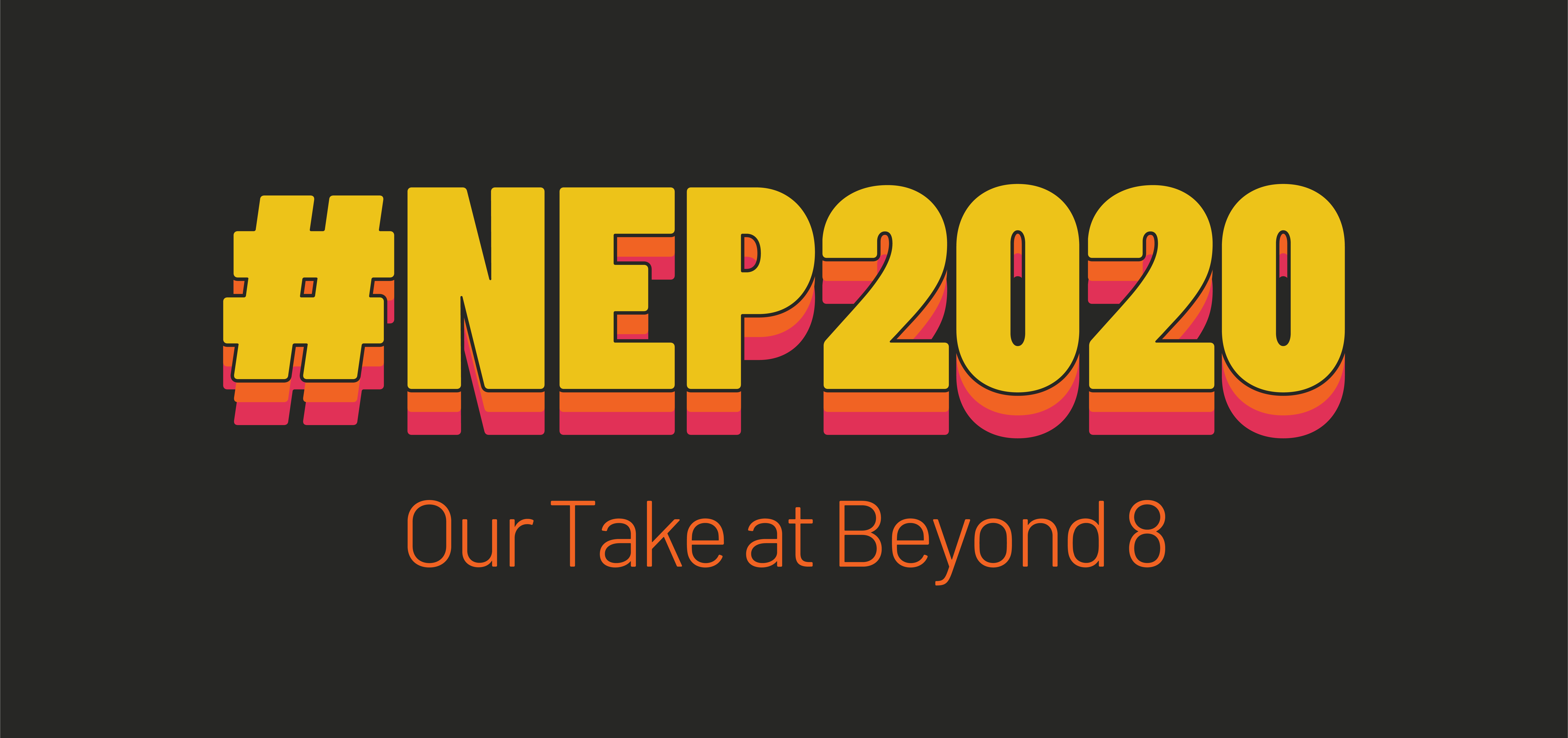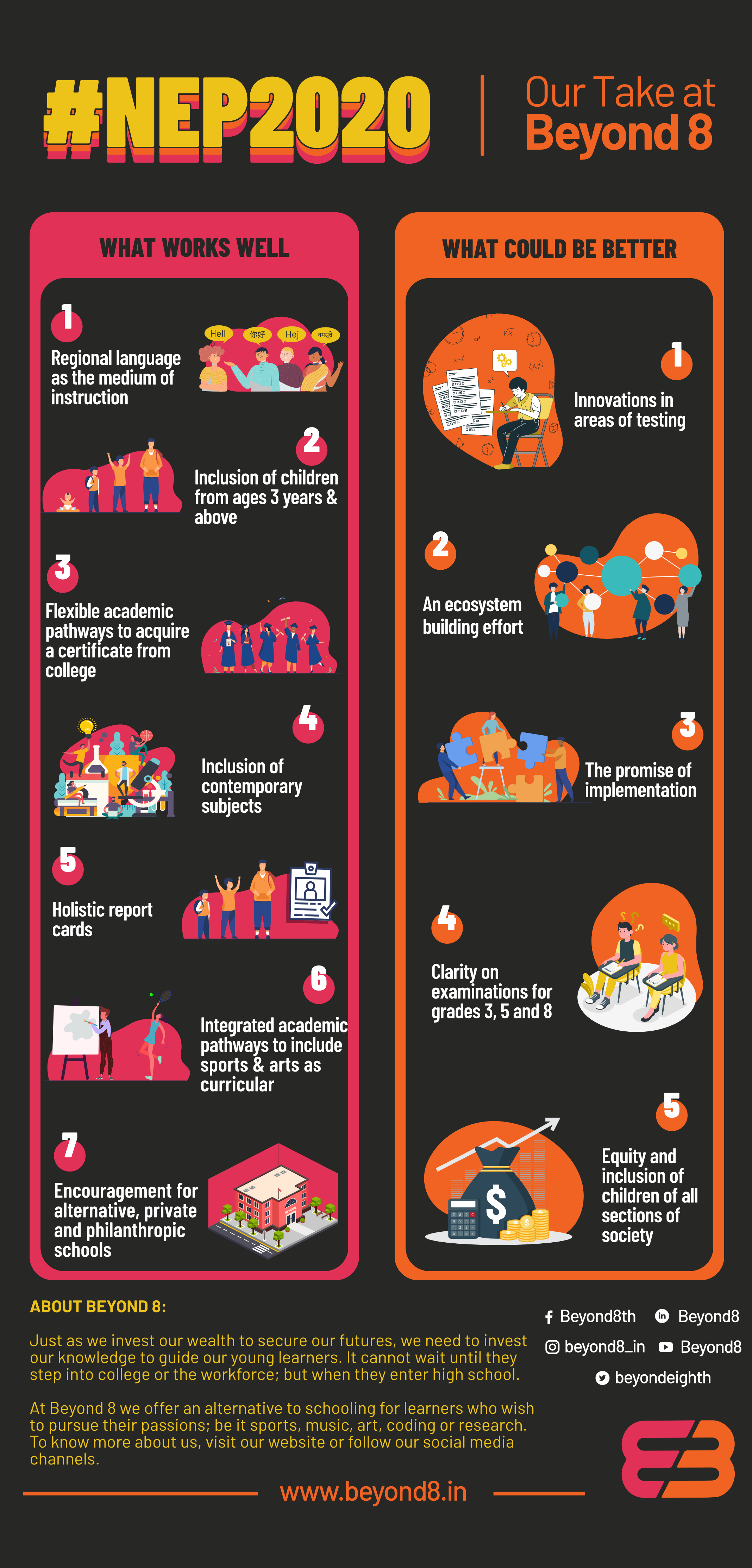Sizing up National Education Policy 2020
13 August 2020 — Written by Raaji Naveen

Imagine a vintage Premier Padmini from the 90s fitted with the parts of a 2003 TESLA and purported to be the vehicle of the 2040s. That was precisely the analogy that the recent National Education Policy (NEP 2020) conjured up in my head!
Let us delve a little deeper into what we at Beyond 8 think about this development.
What we loved:
- The suggestion of regional language as the medium of instruction until grade 5 (maybe even 8)
- The inclusion of children from ages 3 years upwards in the policy framework
- Flexible academic pathways to acquire a certificate from college
- Inclusion of contemporary subjects such as global citizenship education, design thinking, environmental education, and artificial intelligence
- Holistic report cards
- Integrated academic pathways where theoretically we are introducing a refined language for arts and sports to be considered as curricular and not just extra-curricular activities
- Encouragement of alternative, private and philanthropic schools
What could have been better:
- Greater innovation and re-imagination of examinations and testing.
- Better ecosystem-building efforts: There is a dearth of a thought process in terms of building partnerships with NGOs, industries, Universities, health departments etc. Unless we take a ‘systems thinking approach where we also integrate with all other systems in our society - the idea of education for all will remain only in letter.
- The promise of implementation: While we genuinely applaud the collective approach of the government to create a Ministry for Education for the first time ever, we are still unsure about how this theory will be put into practice.
- Lack of clarity on how Board exams and standardized testing will work for grades 3, 5 and 8 and the design of the National Testing Agency.
- Better Equity: Except for the inclusion of regional languages, there is no specific mention of how this policy will create an impact on the poorest of the poor who make up the majority of our country. While the SEDG’s find mention in the policy, it is very preliminary and vague except for fee waivers. The inclusion of children with disabilities has remained a dream and it will be interesting to see how the policy can bring these into action.
In our opinion, NEP 2020 could have all the makings of a revolutionary paradigm shift in education – it could have been India’s golden ticket to position herself as a pioneer rather than a mere follower among global counterparts. While NEP 2020 has many ‘nice-to-have’ features that were in the waiting for almost 30 years now, the policy is still made for a bygone era. It could really do with crucial ingredients such as a futuristic outlook, innovation and a promise of implementation for the most deserving population.

What are your thoughts on NEP 2020? Tell us in the comments below!